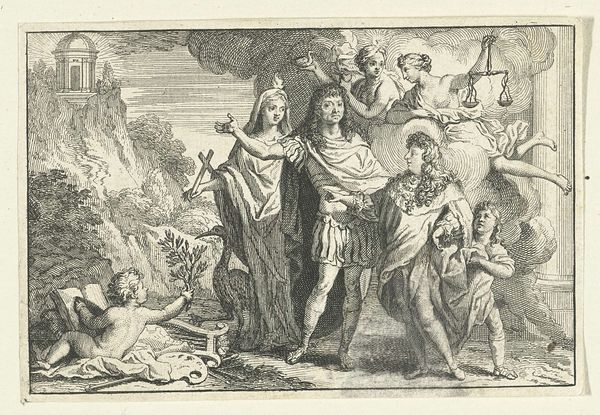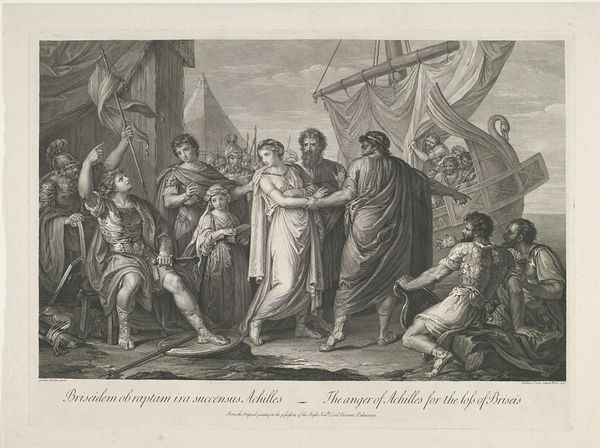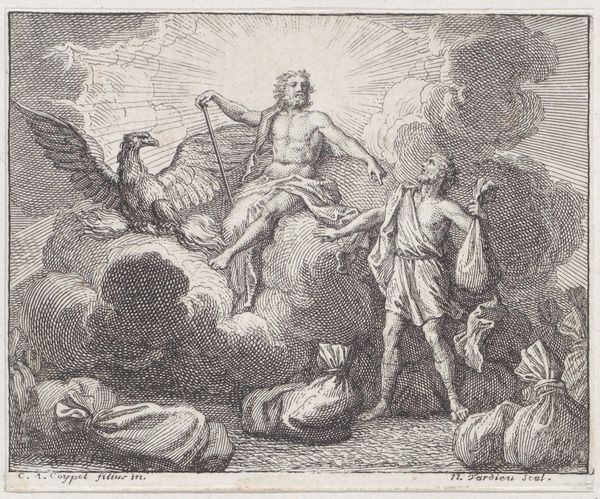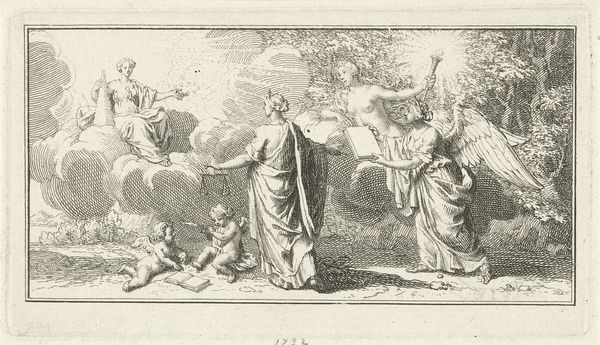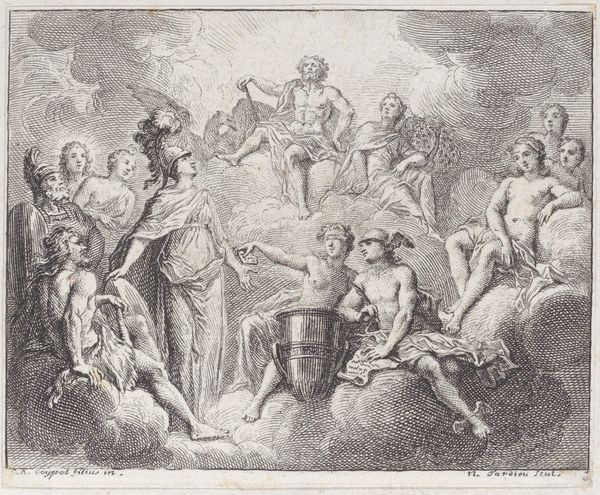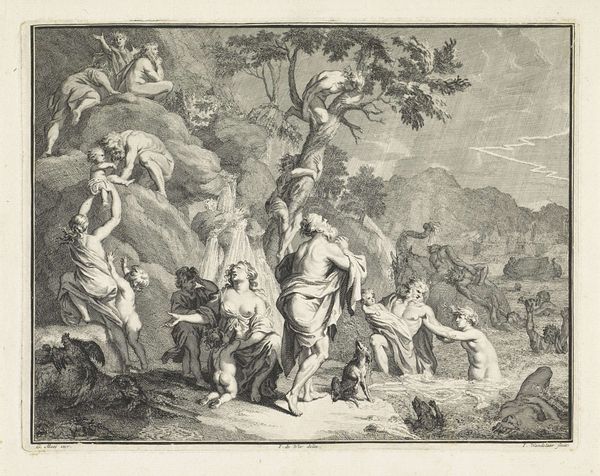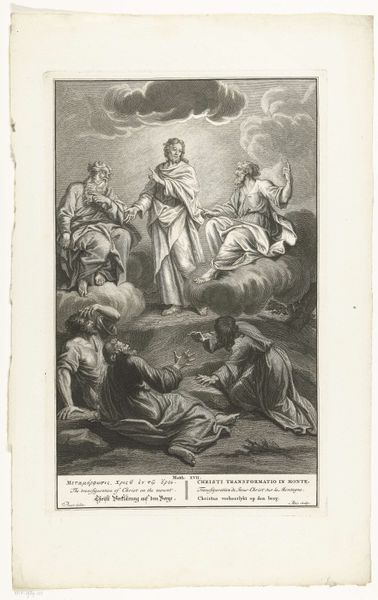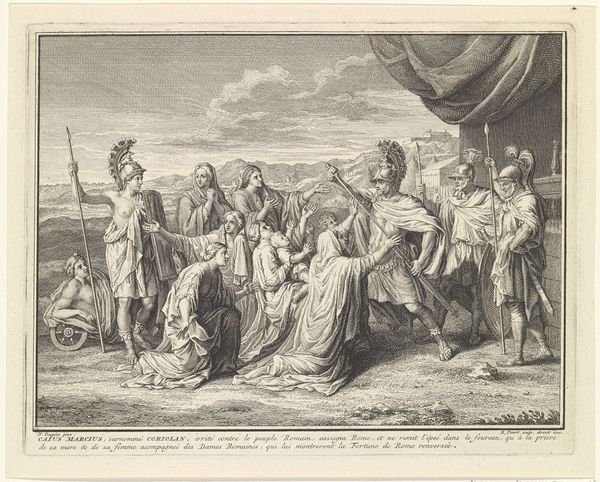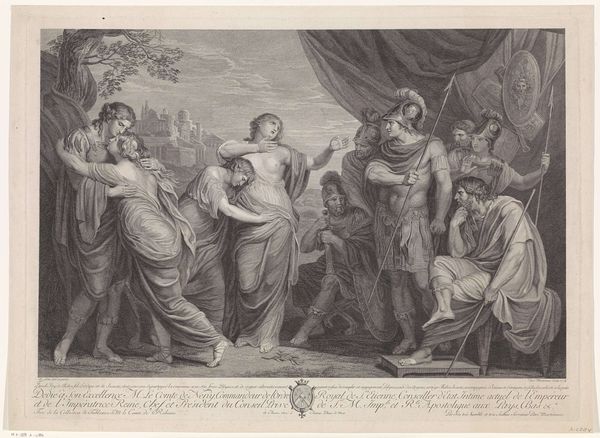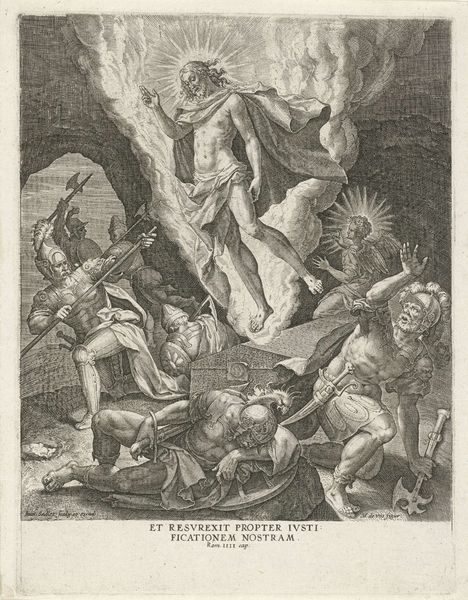
engraving
#
allegory
#
baroque
#
old engraving style
#
figuration
#
line
#
history-painting
#
engraving
Dimensions: height 75 mm, width 120 mm
Copyright: Rijks Museum: Open Domain
Curator: Here we have Bernard Picart’s engraving from 1709, titled "Allegorical Representation with Louis, Dauphin of France." The composition feels quite dramatic, wouldn't you say? Editor: Indeed. My initial reaction is to the highly organized nature of its elements: figures frozen in prescribed postures and the radiating beams above all underscore Baroque sensibilities. Curator: The print’s Baroque allegorical style serves as a lens through which we can view Louis, heir to the French throne. The imagery speaks volumes about power, legitimacy, and divine endorsement during his era. The central female figure holds the Ten Commandments, points to a divine presence, and suggests religious law sanctioned Louis's rule. Editor: Semiotically, these are all potent symbols. The triangular radiance at the engraving’s apex could signal the Holy Trinity’s approval. Consider, too, the subjugated figure in the foreground: clearly the vanquished, perhaps representing heresy or a political challenge to Louis’ authority. Curator: Such imagery wasn't unique to France. Allegorical depictions were commonly employed across Europe to reinforce dynastic claims and promote favorable images of monarchs. The fascinating aspect here is how classical iconography mixes with Christian symbolism. Editor: Absolutely. The figure in armor resembles a Roman emperor, projecting martial strength, and the juxtaposition of the Roman figure, with its earthly rule, looking towards a higher religious authority, makes an important declaration of power derived from god. Even the presence of the lion is noteworthy: often associated with nobility and strength, its presence further legitimized the power and importance of the heir. Curator: So the work's design presents an interesting combination of faith, power, and national identity; moreover, notice how much blank space is actually here? I'm used to prints of the Baroque era being busier. Editor: A formal elegance, achieved through strategic voids as well as layered and detailed elements! This enhances the engraving's visual legibility. Looking at the figures individually offers compelling insights, revealing the strategies for articulating dominance and justification through religious-political ideologies of early 18th century French history.
Comments
No comments
Be the first to comment and join the conversation on the ultimate creative platform.
